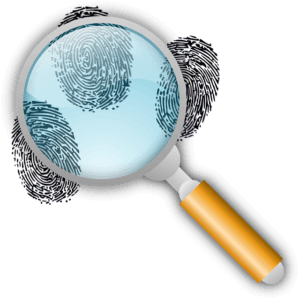Recognizing Autism Spectrum or Autism Spectrum Disorder (ASD) Symptoms, Signs and Characteristics
 Individuals on the autism spectrum will have symptoms from a very young age, beginning before the age of three. Some autistic children show hints of future challenges within the first few months of life. In others, symptoms might not show up until 24 months or later.
Individuals on the autism spectrum will have symptoms from a very young age, beginning before the age of three. Some autistic children show hints of future challenges within the first few months of life. In others, symptoms might not show up until 24 months or later.
These autism signs or symptoms may last throughout a person’s lifetime, although intensity can change over time and many symptoms may be able to be improved or reduced over time through therapy and greater self-awareness.
A person on the autism spectrum might:
- Seem to develop normally until 18–24 months, then either stop gaining new skills or lose some they’ve already developed
- Not respond to their name by 12 months
- Not point at objects to show interest (e.g. point at an airplane flying over) by 14 months
- Not play “pretend” games (such as pretend to “feed” a doll) by 18 months in what would be considered a typical way. (They may be using their imagination by doing their own pretend games but it will look different. For example: lining up cars or stacking blocks by color or size.)
- Avoid eye contact and want to be alone
- Have trouble understanding other people’s feelings or talking about their own feelings
- Have delayed speech and language skills
- Repeat words or phrases over and over (echolalia)
- Give unrelated answers to questions
- Get upset by minor changes
- Have obsessive interests where they will hyperfocus or perseverate on the same topic
- Flap their hands, rock their body, or spin in circles
- Have unusual reactions to the way things sound, smell, taste, look or feel
Signs and Characteristics of Autism in additional detail
We invite you to listen to Episode 7 of the Autism Empowerment Podcast where we go into depth about early signs of autism in children. We also talk about the CDC’s early intervention initiative: Learn the Signs. Act Early.
The hallmark feature of autism is impaired social interaction. As early as infancy, a baby with autism may be unresponsive to people or focus intently on one item to the exclusion of others for long periods of time. A child with autism may appear to develop normally and then withdraw and become indifferent to social engagement.
Children on the autism spectrum may fail to respond to their names and often avoid eye contact with other people. They may have difficulty interpreting what others are thinking or feeling because they have challenges understanding social cues, such as tone of voice or facial expressions, and may not watch other people’s faces for clues about appropriate behavior. It can appear that they may lack empathy because it may not be shown in traditional ways but they may be experiencing overwhelming empathy overload and not know how to process what they are feeling or experiencing.
Many children on the autism spectrum engage in repetitive movements such as rocking and twirling, or in self-abusive behavior such as biting or head-banging. They also tend to start speaking later than other children and may refer to themselves by name instead of “I” or “me.” Children on the autism spectrum may struggle in how to play interactively with other children. Some speak in a sing-song voice about a narrow range of favorite topics, with little regard for the interests of the person to whom they are speaking.
Children and adults with characteristics of autism often have co-occurring conditions. Because autism is a spectrum disorder, not every person with autism will present with the same characteristics or with the same level of severity. As such, signs and characteristics may often be attributed to other conditions or co-conditions. An individual (especially those who are diagnosed later in life) may receive another diagnosis before the autism diagnosis and be more likely to receive services through the mental health system first.
What about signs and characteristics of Asperger syndrome?
Asperger syndrome is also on the autism spectrum. It was listed in a separate category in the Diagnostic and Statistical Manual IV (DSM-IV), first published in 1994. The DSM-5 manual, published by the American Psychiatric Association (APA) was revised in May 2013 and Autistic Spectrum Disorder, Asperger syndrome and PDD-NOS were all consolidated together under one umbrella term, “Autism Spectrum Disorder”.
Many websites talking about autism and ASD will still refer to definitions under the DSM IV. In some cases, providers will consider individuals with a diagnosis under the DSM IV to be grandfathered in as “Autism Spectrum Disorder” in terms of qualifying for and receiving services. In some cases, to qualify for services an individual may need to be re-evaluated. You will need to check with your educational and medical providers about your own particular circumstance.
“Asperger syndrome”, Asperger, Asperger’s and Aspie are all terms that continue to be seen and used as there are many in Autistic and Asperger communities who have built support and information networks around these terms.
For purposes of informing site visitors, we will continue to include information about Asperger syndrome on the Autism Empowerment website. We will also post updates about the new DSM-5 if there is new information.
https://www.dsm5.org/Pages/Default.aspx
As signs, characteristics and symptoms for Asperger syndrome and PDD-NOS were looked at differently in terms of diagnosis in the DSM-IV, we have also included information about these here as well.
References
Health-related material is provided for information purposes only and does not represent endorsement by or an official position of Autism Empowerment. Advice on the treatment or care of an individual patient should be obtained through consultation with a physician who has examined that patient or is familiar with that patient’s medical history.
